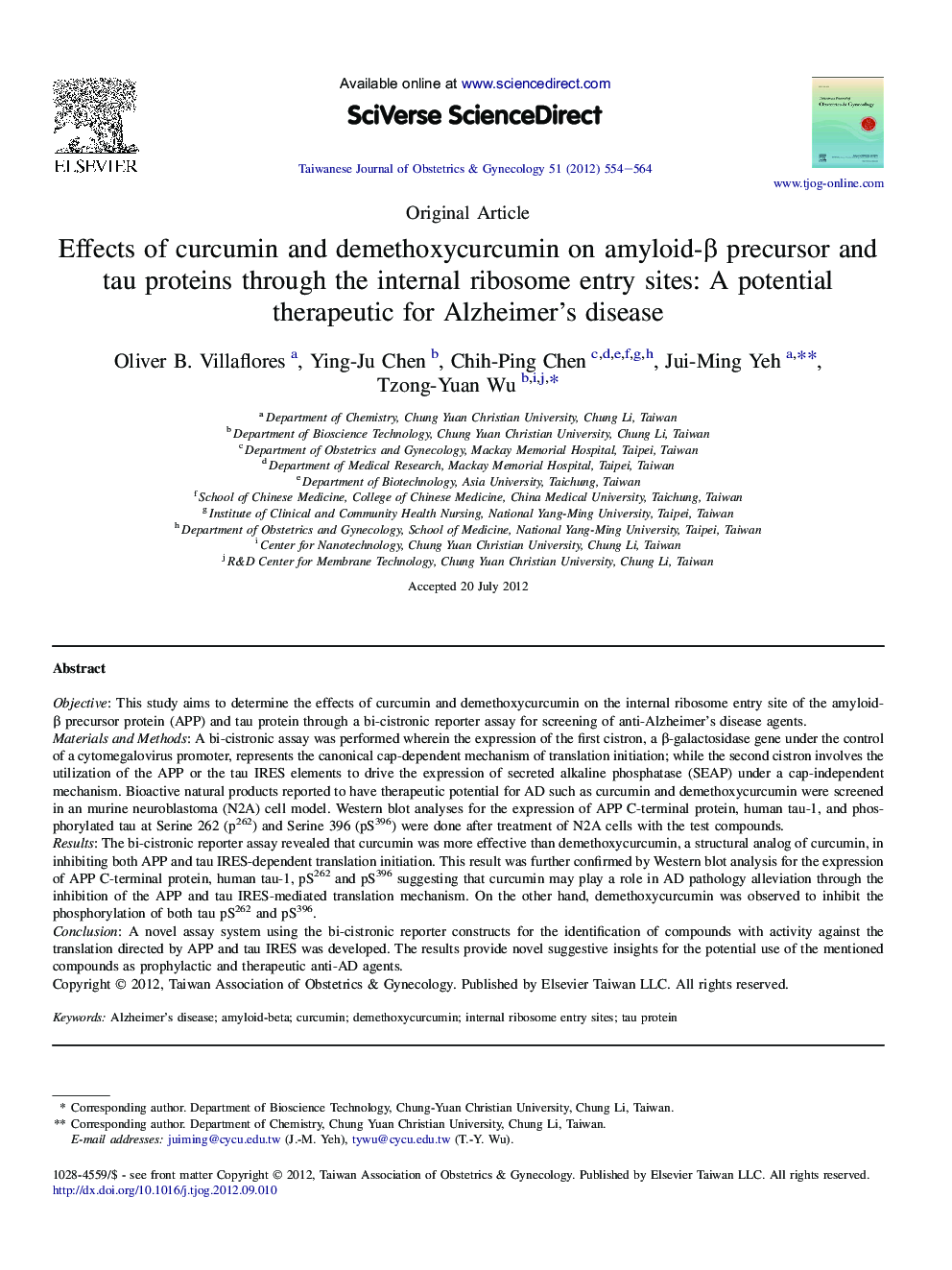| Article ID | Journal | Published Year | Pages | File Type |
|---|---|---|---|---|
| 3975643 | Taiwanese Journal of Obstetrics and Gynecology | 2012 | 11 Pages |
ObjectiveThis study aims to determine the effects of curcumin and demethoxycurcumin on the internal ribosome entry site of the amyloid-β precursor protein (APP) and tau protein through a bi-cistronic reporter assay for screening of anti-Alzheimer's disease agents.Materials and MethodsA bi-cistronic assay was performed wherein the expression of the first cistron, a β-galactosidase gene under the control of a cytomegalovirus promoter, represents the canonical cap-dependent mechanism of translation initiation; while the second cistron involves the utilization of the APP or the tau IRES elements to drive the expression of secreted alkaline phosphatase (SEAP) under a cap-independent mechanism. Bioactive natural products reported to have therapeutic potential for AD such as curcumin and demethoxycurcumin were screened in an murine neuroblastoma (N2A) cell model. Western blot analyses for the expression of APP C-terminal protein, human tau-1, and phosphorylated tau at Serine 262 (p262) and Serine 396 (pS396) were done after treatment of N2A cells with the test compounds.ResultsThe bi-cistronic reporter assay revealed that curcumin was more effective than demethoxycurcumin, a structural analog of curcumin, in inhibiting both APP and tau IRES-dependent translation initiation. This result was further confirmed by Western blot analysis for the expression of APP C-terminal protein, human tau-1, pS262 and pS396 suggesting that curcumin may play a role in AD pathology alleviation through the inhibition of the APP and tau IRES-mediated translation mechanism. On the other hand, demethoxycurcumin was observed to inhibit the phosphorylation of both tau pS262 and pS396.ConclusionA novel assay system using the bi-cistronic reporter constructs for the identification of compounds with activity against the translation directed by APP and tau IRES was developed. The results provide novel suggestive insights for the potential use of the mentioned compounds as prophylactic and therapeutic anti-AD agents.
